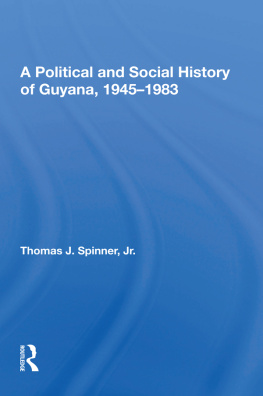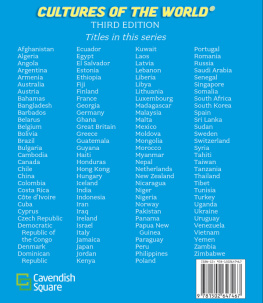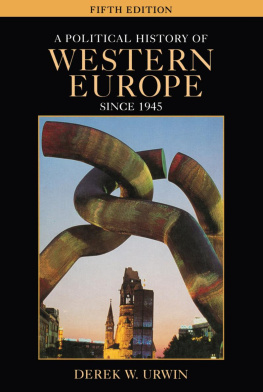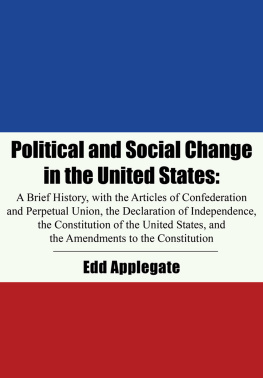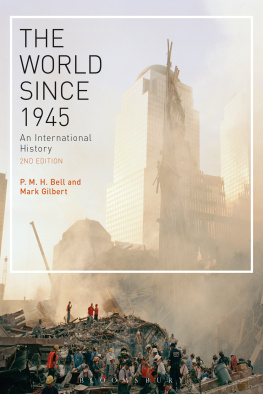Contents
Foreword
Chapter 2 CHEDDI JAGAN, FORBES BURNHAM, AND THE PEOPLES PROGRESSIVE PARTY
Chapter 3 ELECTIONS AND GUNBOATS
Chapter 4 STRIFE AND DIVISION
Chapter 5 RETURN TO CONSTITUTIONAL GOVERNMENT
Chapter 6 RACIAL WARFARE AND FOREIGN INTERVENTION
Chapter 7 GOVERNMENT BY COALITION
Chapter 8 KING FORBES I
Chapter 9 JONESTOWN AND THE HOUSE-MOUSE REFERENDUM
Chapter 10 WHAT HAPPENS TO A DREAM DEFERRED?
Abbreviations
Critical Bibliography
Select Bibliography
Index
Foreword
It is easy to forget that Guyanas history is about the Guyanese people. Reference is made so constantly to the racial parts constituting the whole that one may neglect the valiant efforts being made by so many Guyanese to fulfill the national motto: One People, One Nation, One Destiny.
But the harsh reality of racial tension and violence cannot be avoided. The descendants of Africans, East Indians, Portuguese, English, Chinese, and Amerindians have not yet constructed an integrated society. Central to an understanding of Guyana today is the brutal bitterness and hostility that came to divide, in particular, the East Indian and African peoples.
Unlike many Caribbean communities, Guyanese of African descent seem to prefer the term African to either black or negro. Colored or mixed are the words employed for the mulatto or for any blacks who are partially white. While the colored people aspired to be a part of white society during the slave era, they now identify themselves with the black or African community in the confrontation with the East Indians. One element of confusionamong many othersis that the East Indian, while caucasian or white, may be quite brown. For that matter, as A. J. P. Taylor noted, there is no white race; white people are really rather pinkish.
Although the East Indians have, in general, married within their own community, some have not. It becomes almost impossibleperhaps a good signto classify the permutations and combinations that can occur when you mix African, East Indian, Chinese, English, Portuguese, and Amerindian. While many valid generalizations can be made with regard to racial attitudes, some exceptions are inevitable.
Ultimately, what matters most is the search for ones own identity. This search too seldomly concludes with a recognition of the common humanity uniting us all. Herder, Mazzini, and other great liberal and cultural nationalists conceived of nationalism as a step toward the full realization of ones human qualities. Unfortunately, the generous nationalism of an earlier age has too often degenerated into the fierce, barbarous cries of national superiority that have poisoned the twentieth century. Nationalism may turn cruel and vicious, but it can also be kind and generous. Patriotism may be the last refuge of a scoundrel; it can also be the means by which unity and a sense of purpose are achieved, especially in an artificially created state in a hostile geographic region to which were transported thousands of slaves and indentured laborers.
Surrounded as we are with racial, ethnic, religious, and political conflict, it may seem pointless to investigate the problems of a tiny, English-speaking state in the northern part of South America. Yet, this country contains such a variety of ethnic groups, religious bodies, and political factions that it is possible to enlarge our understanding of both ourselves and the world by a careful observation of Guyanese history in the twentieth century. There is tragedy and grandeur in the story of this small nation called British Guiana prior to independence in 1966.
Until the Jonestown catastrophe of 1978, few Americans had given much thought to Guyana. As large as Great Britain in area, most of Guyanas population of 800,000 is wedged into a narrow coastal strip. One of the worlds more cosmopolitan, smaller nations, East Indians comprise 51 percent of the population; blacks and mulattoes, 43 percent; the original Amerindian inhabitants, about 4 percent; while a final 2 percent is made up mostly of Portuguese, English, and Chinese. About 55 percent of the population is Christian, 36 percent Hindu, and 9 percent Moslem. Few nations could boast, during the 1970s, a Chinese president, Arthur Chung, a black prime minister, Forbes Burnham, and an East Indian, Cheddi Jagan, leading the major opposition party.

